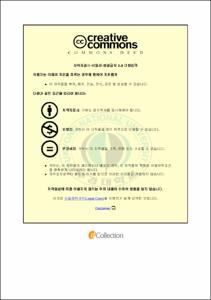ZrO2 복합 세라믹스의 균열치유거동 및 쇼트피닝 처리에 의한 특성 연구
- Alternative Title
- Crack-healing behavior of ZrO2 composite ceramics and characteristics by shot peening treatment
- Abstract
- 지르코니아(ZrO2, Zirconia)는 다른 세라믹스와 비교하여, 소결이 용이하고, 내열성이 크고, 낮은 열전도율을 가지고 있어, 급격한 온도의 변화에 견디며, 산성에서 알칼리성 영역까지 넓은 내 화학 안정성을 가져 내식성이 크다. 또한, 고강도, 고경도, 내마찰성 등 우수한 재료적 특성 때문에 물리적⋅기계적 특성이 좋아, 내열재료로 주목을 받아 왔다. 그러나 약 1373 K에서 단사정(monoclinic) – 정방정(tetragonal) 상전이로 인한 체적변화가 있어, 활용 범위가 제한되어 왔다. 이와 같은 상전이로 인한 체적 변화를 극복하기 위하여, CaO, MgO, Y2O3 등의 소결 보조제를 소량 첨가하여 고용시켜, 상전이를 방지할 수 있음이 연구에서 발견되어, 안정화 지르코니아가 개발되어 여러 분야에 사용되고 있다.
그러나 지르코니아 역시 세라믹스로써, 금속재료나 고분자재료에 비하여 파괴인성이 낮으므로, 기계적 특성은 재료표면 또는 내부에 존재하는 미소결함에 민감하게 반응하여 극단적인 파괴를 한다. 기계적⋅열적 충격에 약하기 때문에, 금속⋅고분자 재료와 비교하면, 신뢰성이 아주 낮다. 따라서 세라믹스를 광범위하게 실용화하기 위해서는 낮은 신뢰성을 개선 또는 극복할 필요가 있다. 이러한 세라믹스의 낮은 신뢰성을 개선하기 위하여 여러 가지 방법이 제시되고, 연구가 진행되고 있다. 예를 들면, 1) 미세구조의 제어 및 섬유복합 등에 따른 재료의 고탄성화, 2) 표면처리 시행에 따른 표면 고강도화, 3) 재료의 자기치유능력을 부여하여 표면에 존재하는 결함 및 균열의 완전 치유 등이다.(1-15)
본 연구에서는 지르코니아에 자기치유능력을 부여하기 위하여 SiC와 TiO2를 첨가하여, 지르코니아 복합 세라믹스의 균열 치유 거동, shot peening 표면 처리에 의한 인성 평가 및 회전 접촉 피로 거동을 평가하였다.
Zirconia can be more easily sintered than can other ceramics. Zirconia has good thermal resistance and low heat conductivity. Therefore, zirconia can withstand sudden temperature changes. Zirconia has good corrosion resistance, because it has wide chemical stability from acid to alkaline. Zirconia has good material characteristics, such as high strength, hardness, and abrasion resistance. So, the physical and mechanical properties are good. Though it received attention as a heat-resistant material, its application has been limited in scope, because of the volume change, due to the phase transition from the monoclinic to the tetragonal at approximately 1373 K. A few percentages of the oxides of calcium or yttrium stabilize the zirconia. It has been used in many fields.
However, because the fracture toughness of zirconia is lower than that of polymer materials and metal materials, its reliability is low. Many studies are being conducted, in order to solve the brittle nature of ceramics: (1) Toughening by microstructure control and fiber/particles dispersion, (2) detection and repair of crack by non-destructive testing, and (3) the crack-healing method.
We added SiC and TiO2 on zirconia, in order to observe the self-healing ability. We evaluated the crack healing behavior and the shot-peening surface characteristics of zirconia composite ceramics. The results obtained are as follows: The addition of SiC in partially stabilized zirconia reduced bending strength by about 56%. But, the addition of SiC and TiO2 reduced bending strength by approximately 18∼33%. It is judged that this was the effect of crystallization during sintering, due to the addition of SiC and TiO2. Crack healing properties have been given by the addition of SiC. The optimal healing conditions are 5 hours at 1073 K of ZST3 specimen. Micro-cracks on the surface of Zirconia composite ceramics occurred after heat treatment. It is considered that this was unstabilized by the addition of TiO2 and SiC. Zirconia composite ceramics (Z, ZS, and ZST3), after SP treatment reduced the crack growth, and the bending strength of the as-cracked specimen was improved. This is because compressive residual stress has been induced on the surface by SP treatment. The rolling contact fatigue strength of as-received specimen (Z, ZS, and ZST3) did not show difference, and that of SP treatment was decreased. This is because of increasing surface roughness by SP treatment.
- Issued Date
- 2013
- Awarded Date
- 2013. 8
- Type
- Dissertation
- Publisher
- 부경대학교
- Alternative Author(s)
- Hwang, Jin Ryang
- Affiliation
- 대학원
- Department
- 대학원 기계공학학ㆍ연협동과정
- Advisor
- 남기우
- Table Of Contents
- 목 차
Abstract
1. 서론 1
2. 이론적 배경 2
2.1 지르코니아 (ZrO2) 2
2.2 탄화규소 (SiC) 3
2.3 세라믹스 재료의 신뢰성 및 개선방법 4
2.4 균열 치유 (Crack-healing) 4
2.5 쇼트 피닝 표면 처리 (SP처리) 5
2.6 회전 접촉 피로 강도 6
2.7 잔류 응력 6
3. 재료 및 실험 방법 8
3.1 재료 및 분말혼합방법 8
3.2 소결(Sintering) 8
3.3 시험편 제작 8
3.4 실험방법 9
3.4.1 밀도측정 9
3.4.2 예 균열의 도입 및 균열 치유 조건 9
3.4.3 쇼트 피닝 처리 10
3.4.4 SP 시험편의 표면 조도 측정 및 예균열 도입 10
3.4.5 굽힘 강도시험 11
3.4.6 회전 접촉 피로 시험 11
3.4.7 표면관찰 및 구조 분석 12
3.4.8 잔류응력 측정 12
4. 결과 및 고찰 22
4.1 지르코니아 복합 세라믹스의 특성 22
4.1.1 비커스 경도 22
4.1.2 굽힘 강도 22
4.1.3 조직 관찰 23
4.1.4 XRD 분석 23
4.2 지르코니아 복합 세라믹스의 균열 치유 특성 29
4.2.1 균열 치유 전과 후의 균열부 및 표면 관찰 29
4.2.2 균열 치유 조건에 따른 상온 굽힘 강도 40
4.2.3 균열 치유 처리에 따른 상전이 52
4.3 쇼트 피닝 (Shot Peening, SP) 표면 처리에 의한 특성 61
4.3.1 SP 처리 전과 후의 조도 61
4.3.2 SP 처리 전과 후의 비커스경도 61
4.3.3 SP 처리 전과 후의 굽힘강도 62
4.3.4 SP 처리 전과 후의 균열 발생 거동 67
4.3.5 SP 처리 후 무결함화 특성 71
4.3.6 SP 처리 전과 후의 회전 접촉 피로 강도 비교 74
4.3.7 SP 처리 전과 후의 잔류 응력 비교 85
5. 결론 87
참고문헌 89
감사의 글 93
- Degree
- Master
- Appears in Collections:
- 대학원 > 기계공학학연협동과정
- Files in This Item:
-
-
Download
 ZrO2 복합 세라믹스의 균열치유거동 및 쇼트피닝 처리에 의한 특성 연구.pdf
기타 데이터 / 7.54 MB / Adobe PDF
ZrO2 복합 세라믹스의 균열치유거동 및 쇼트피닝 처리에 의한 특성 연구.pdf
기타 데이터 / 7.54 MB / Adobe PDF
-
Items in Repository are protected by copyright, with all rights reserved, unless otherwise indicated.